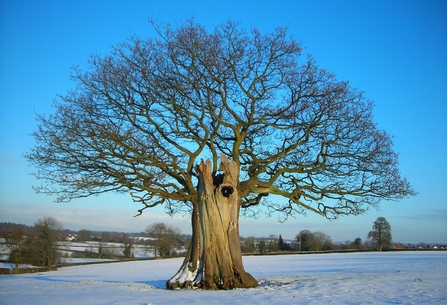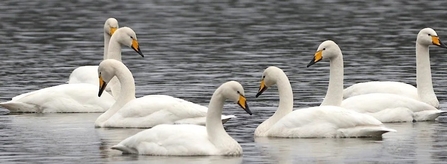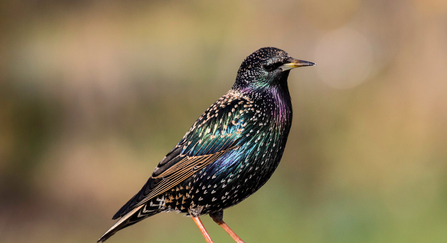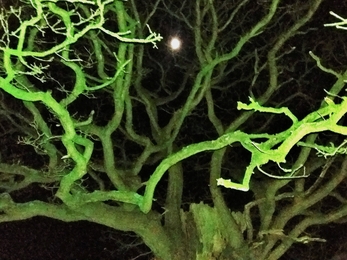My Favourite Winter Tree
Standing alone in the middle of a field half a mile from my house is a special tree, an oak.
It stands proudly on the skyline and one winter's day some years ago I took this photo of it.
Wild Update - December 2024

Oak - Nick Brown
As you can see, many years ago the oak had suffered some major trauma losing everything apart from its lower trunk.
Presumably it had been struck by lightning.
Undeterred, the damaged trunk put out new branches, spreading them symmetrically to enable its leaves to catch as much sunshine as possible (how do they do that?).
One bright moonlit night during lockdown, I ventured out to this tree to try to capture some of its nocturnal magic.
The world was silent. No planes, no cars, no sounds. The moon shone brightly helping me find my way.
Whooper swans succumb to power lines
It was very sad to read that 18 whooper swans had died last week as a result of flying into power lines in Cambridgeshire, presumably in foggy conditions.
Whoopers are winter visitors from Iceland and they have been increasing in numbers despite incidents like that one which fortunately are rare.
Each autumn, flocks pass through our county, rarely staying longer than a day or two if that.
Their wonderful wild calls, the yellow on their beaks and their wild demeanor mark them out as being very different from mute swans.
Watch and listen to them here: Bird sounds - SWAN call in the spring lake .

Whooper Swans by David Johnson
Mark the herald
Mark Radford and Sid Morris found more than 70 herald moths hibernating in old railway tunnels in Spinkhill and Markham last week accompanied by ten peacock butterflies.
Herald moth caterpillars feed on willow and poplars but in autumn, the second generation of adults feed on the flowers of ivy - something I didn't know until now!

Herald Moth by Mark Radford
Ravens will soon help us look forward to spring
Ravens roost communally in winter occasionally in large numbers. I remember standing at dusk in a wood on Anglesey where at least 500 ravens were arriving to roost. The cacophony was very loud and very memorable.
However, even before the end of January these roosts begin to break up as birds return to their breeding territories. They are very early breeders.
Once back, you can hear and see them displaying in the sky above their nest sites.
As they fly, they make their unmistakable 'cronking' calls and often roll over on their backs in the process, something no other corvids do.

Raven - Andy Karran
Mimicry
Searching YouTube and failing to find a video of ravens calling and rolling in flight, I came on several of tamed ravens (and starlings) showing off their vocal skills.
While I'm not in favour of keeping wild birds in captivity, this starling video shows off one bird's remarkable repertoire:
Starling's Stunning Skills with Sound || ViralHog
In the wild, starlings mimic the calls and songs of birds they hear around them and in the process, giving away the location they have come from.
A wintering starling in North London mimicked a golden oriole, a bird which it must have heard when breeding somewhere further south in Europe.

Mark Robinson


